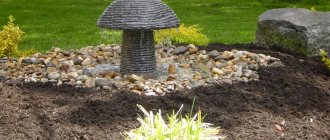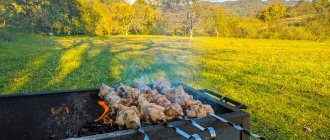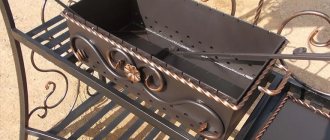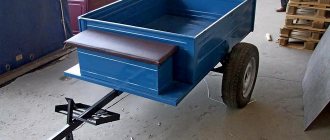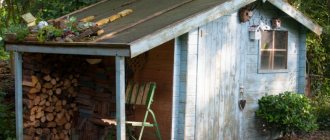Childhood is a carefree time for a variety of games: in the fresh air, at home, and anywhere. Children's imagination and developed imagination can turn a boring shop in the queue of a clinic into a ship that goes to the shores of Africa. Or a temporarily placed stepladder instantly acquires a blanket cape and turns into a wigwam! Mom put up the stairs, hung the curtains, walked away for a minute - and then the Indians of the Forest Brook tribe seized the territory! So that.
Modern toy manufacturers offer parents and their fidgets a variety of options for tent houses. There are fairies , heroes, cartoon characters, and a paramilitary version - everything your heart desires. And the child asks for a hut, like in the summer when we went to the river. And the tent is no good for him. What to do? Take on drawings, patterns, call your dad or grandfather to drill holes in the frame sticks , look for an old sheet and instructions on how to make a hut with your own hands - in a word, fulfill a childhood dream and plunge into all this magic yourself!
Materials and tools for making a wigwam
The choice of materials primarily depends on where the hut or wigwam will live.
If you are making a wigwam for children, the choice in any case will be more natural materials: cotton, burlap, etc. If the child will play exclusively at home, then you can use an old sheet or similar fabric that is suitable in size and color. For playing outdoors, in the courtyard of a house, in a country house, etc., it is better to take a denser fabric that will not be blown by the winds and will not get wet from the first drops of rain. Of course, you shouldn’t take tarpaulin, but it’s worth taking a closer look at fabric like cloth!
You will definitely need foam rubber or sheet synthetic padding for the floor. If the games involve children of not the most conscious age who are just getting used to the potty, it is better to sew oilcloth into the top layer of the floor to protect it from unpleasant surprises. For a street hut, such a layer will in any case be insufficient, unless the structure is installed on a plank floor. If the hut will stand on the ground, you will definitely need to sew pillows into it.
In addition to fabric and other sewing accessories, you will definitely need material for the frame; these can be wooden sticks of the required thickness or plastic pipes of a suitable diameter. The latter option is preferable, since the stick can still break under the pressure of children's games, and the plastic pipe is more likely to bend.
The frame and fabric are the main materials for a wigwam, but in addition to this, you will also need a strong rope that will hold the “top” of the frame together.
Step-by-step instructions vary depending on the type of wigwam you choose. First, the frame is made, then the pre-prepared parts are attached, after which you can start decorating. Only then should you move on to decorating the windows, sewing on ruffles, lace and other elements.
What to make the floor of a hut from
The best “floor” covering for a hut at the dacha is a lawn. It is not always possible to place a “house” where grass grows, then the carpet needs to be taken care of separately. The flooring is formed from branches of deciduous trees and shrubs and herbaceous plants.
Do not use:
- Poisonous,
- Prickly,
- Foul-smelling
- Causing allergies.
The best covering is hay, straw, and mowed lawn grass. They can be used after they are completely dry, otherwise the litter may rot. From artificial materials, a karemat is suitable - a mat made of a special material that does not allow moisture and cold to pass through, similar to a thin single mattress. Sold in different sizes. It is used by tourists - tent campers. Much more often, the karemat serves those who lead a healthy lifestyle and do gymnastics.
Air mattresses can be placed on the floor of the hut. They will reliably protect from dampness, and it is very comfortable to sit on them. If such coverings are not available, simply lay out a blanket and bring cushions. This creates a feeling of home comfort.
Making a wigwam frame
You should start with sticks: they are either wrapped in a tight knot or holes are drilled and a rope is inserted there. The second option is more reliable, but not everyone has the opportunity to use additional tools.
The slats are placed at approximately the same distance from each other.
It is recommended to prepare fabric patterns in advance. The edges must be processed so that there are no threads sticking out. They can be attached to strings, sewn, glued, tied to each other - whatever your imagination allows.
Required Tools
In order to install an Indian dwelling, in addition to fabric and a frame, you need scissors, a pencil, pattern paper, glue, a tape measure and a sewing machine (in extreme cases, thread and a needle). These tools will also be useful in determining the correct patterns and sizes for a given wigwam with your own hands.
Wigwam pattern
Depending on the shape, wigwam patterns for children may vary. The design can have 5, 6, 9 shelves, but the simplest and most understandable option for implementation will be a square frame option.
To use the material efficiently, you need to correctly position the pattern pieces on the fabric. To do this, you first need to display the “walls” of the wigwam on paper.
This pattern will make 4 pieces. The side elements should be sewn to the middle, this will form the entrance to the house. The pattern implies the presence of a window and a pocket for toys and other small items. The third party will be deaf.
The next step will be making a pattern for the cover. You should start from the front side, where the entrance will be located. Then the remaining elements are gradually sewn together and supplemented with special pockets for sticks.
Product dimensions may vary. The main thing is to maintain proportions and not go beyond a single idea.
Once the pattern for the cover has been drawn, it should be carefully cut out and applied to the fabric. Due to the fact that the cover has a rounded shape, it should be cut out carefully so that in the end the workpiece fits perfectly into the wooden structure.
How to make a wigwam pattern yourself is shown in this video:
The process of building a hut house
The construction of a foundation does not require large financial investments, because the foundation can be built in the form of strip piles or a combined structure. This construction process is relatively inexpensive and labor-intensive. In addition, you can use slabs or cement blocks. The foundation is laid on a leveled layer of sand. You don’t have to be afraid of distortions, because the foundation of the house is a rigid triangular frame with transverse joists.
The following dimensions are taken as a basis - 6 by 9 meters, the height is approximately 9 meters.
So, more about the construction technology.
First, the foundation.
- To lay a strip foundation, it is necessary to mark the desired area on a previously cleared area using pegs and thread;
- Next, they proceed to digging trenches along the perimeter of all future walls of the hut house. First, layers of gravel, crushed stone, or sand must be laid under the trenches. The intermediate layer should be laid out quite densely, avoiding empty areas;
- Then, formwork is installed in place of the trenches, then the whole thing is covered with boards 25-30 cm wide;
- After this, they are laid with rubble blocks, leaving the base;
- All of the above layers are filled with concrete mortar, the next ones are embedded in concrete.
Do not forget about the ligaments between the joints of the blocks when laying them; in this case, the position of the seams of the upper rows changes. In general, the foundation and blind area should have a height of 25 to 40 cm.
Secondly, laying the frame and walls.
After the foundation is ready, you can begin the process of constructing frame blocks:
To begin with, the inclined wooden beams are marked according to the planned height; The beams are folded on the surface of the earth into the letter A, the corners are adjusted using a ridge; Next, the gap between the ends from below is leveled and the bolts are tightened tightly; The finished beams are installed on the foundation area, starting from the extreme ones, then moving to the middle ones, it is important to maintain equal intervals.
- These bars are also baited, then the vertical angle is checked and fixed;
- In the same way, a load-bearing floor is installed on the next floor.
Thirdly, installation of roofing.
Almost any roofing materials are suitable for these purposes, such as:
- Slate;
- Metal tiles;
- Profiled sheet;
- Bitumen sheet.
- Slate coating consists of asbestos and cement and has a wavy structure. This material is quite strong, durable, low cost and environmentally friendly, as it does not emit harmful fumes into the atmosphere. Of the minuses, it can break during transportation and absorb water in case of increased dampness.
- Metal tiles are steel sheets that have a shaped shape and a special protective coating that does not allow rain, snow, hail, or mechanical stress to damage their structure. Also, the material in question is low cost, safe and durable. Among the disadvantages: during rain, hail is observed, and the sheets can be lost during the installation process.
- Profiled sheets are the most optimal material for roofing; these are metal sheets made of galvanized steel. Advantages: durability, ease of installation and environmental friendliness. Disadvantages: the material is susceptible to corrosion and heats up significantly in the sun.
- A sheet of bitumen has a shape similar to slate, however, it contains cellulose fibers that are impregnated with bitumen. Pros: non-corrosive, easy to install, huge range of shapes and colors. Cons: susceptible to fading when exposed to sunlight, does not protect against temperature changes.
To increase the strength of the roof, it is covered with roofing felt in advance, before installing roofing materials.
Option 1. How to sew a stable wigwam for children
Required tools and materials
To create a wigwam for children with your own hands, you will need the following materials:
- 4 slats to create a frame base and a few more for an additional frame below;
- dense fabric (not synthetic);
- rope or rope;
- threads
The main tools you need are:
- scissors;
- sewing machine and all accessories;
- tape measure or sewing tape measure.
Instructions
- Measure the sides of the triangle walls.
- Cut four pieces of fabric to these dimensions, adding 7 cm on each side.
- Sew them together, leaving one side unstitched - this will be a swing door. In total you will get 3 seams with large allowances - 6-7 cm on each side
- Sew the allowances along the edge so that you get a drawstring into which the stick will be inserted.
- Trim the top edge by 10-15 centimeters - this will be the hole “under the ceiling” of the tent. Finish the edge - overcast or hem.
- Stretch the tent from below onto the poles. Glue it to the wood at the top.
- The entrance to the wigwam is covered with two sheets, which can be folded over the racks or closed, closing the entrance.
- A small improvement significantly strengthens the structure: just on the entrance side, connect two posts at the bottom with tape (you will need glue). It should be attached to the sticks as close to the floor as possible so that the child does not stumble. What does this give? The racks will not be able to move in different directions.
Advantages and disadvantages
Hut houses have their advantages over standard buildings, but their owners will still have to face some difficulties.
Advantages
The advantages of hut houses relate to both their appearance and functional features.
- Huts attract with their appearance, architectural design and design, so they are ideal for young families, people with creative thinking, and those who are tired of typical buildings. However, they will also appeal to those who love comfort - such houses have a special atmosphere and contribute to comfortable rest and tranquility
- The universal look fits the house into any landscape - in the forest, in the garden, in the countryside, in the private sector. It will look contrasting to conventional buildings and harmonize with natural elements
- The simple design reduces construction time and saves on materials. If you have the necessary tools, it can be built by hand in a short time. Also, for a small building it is not necessary to make a volumetric foundation - you can get by with a strip foundation located only under the walls
- A gable roof is suitable for regions with high rainfall. It will not accumulate moisture and will protect the soil near the foundation from erosion
- Huts fit well into a small plot of land. They have compact shapes and make it possible to design a beautiful home without taking up a lot of space. Such buildings do not provide much shade, so they do not interfere with plants, and the triangular roof will allow trees to grow
A large number of varieties of designs and interior layouts provide ample space for the implementation of ideas and make it possible to create a house that ideally meets all the needs of its owners.
Disadvantages and possible difficulties
A hut as a country house has a minimum of disadvantages, but if you adapt it to a place of permanent residence, you will have to face difficulties:
- low thermal insulation and frost resistance
- loss of usable area due to narrowing
- the need to buy non-standard materials
- a small number of ready-made planning projects
In general, the disadvantages of a hut house can be compensated for by a high-quality layout.
A hut house is an excellent original solution that will look good in combination with any landscape. It is a quiet corner conducive to peace and relaxation. The simplicity of the design greatly facilitates construction and saves time and materials, and the result is surprising in its appearance and functionality.
Video: Hut House using Frame Technology / A-frame house / Country summer house
Hut House using Frame Technology / A-frame house / Country summer house
Hut house (A-shaped house): projects, dimensions, layout, advantages and disadvantages | (75+ Photos & Videos)+Reviews
Option 2. Master class on making a wigwam without sewing
Materials and tools
For the frame:
- 6 wooden slats with a thickness of 2 to 4 cm and a length of 2 m. Instead of slats, you can take bamboo sticks - they are light, inflexible and look nice;
- twine or other strong rope;
- roulette;
- drill and drill bit (optional, but recommended);
- a strong rubber band (not needed if you have a drill).
Plot
0 votes
+
Vote for!
—
Vote against!
From generation to generation, the experience of creating your own hut, which children of different ages dream of, is passed on. In today’s article we will look at the most common options for constructing a wigwam in the forest, in a country house or on a private property. We will tell you what materials are best to use, and also provide step-by-step instructions for work, which will not only eliminate possible errors, but also speed up the construction process. Let's talk in detail about how to make a hut with your own hands for children, focusing on budget materials, turning the most popular ideas into reality.
Table of contents:
- Do-it-yourself hut in the country from scrap materials
- DIY summer hut for children made from branches
- Types of street huts. Do-it-yourself lean-to hut - stages of construction
- Instructions for building a gable hut in the forest
- DIY circular hut for children
- How to build a country toilet hut with your own hands
Do-it-yourself hut in the country from scrap materials
As a rule, parents prefer to organize a children's area in a visible place, but growing champions and princesses really want to hide and play their favorite games, feel independent and grown-up. That is why the practice of building various huts is so popular among children.
Of course, you can build a luxurious, expensive cottage for children's entertainment, either on the street, in the territory of a dacha, in a house, etc., but everyone understands that this building is temporary and investing a large budget in it is somehow thoughtless, precisely because of this For this purpose, children and adults use the most readily available materials available on the farm: cardboard, fabric, boards, branches, live plants, tarpaulin, plastic film, etc. The choice of base also depends on the purpose of construction, because it is generally accepted that a high-quality do-it-yourself hut should protect from bad weather and have a durable structure. Let's look at several options that are most common among families with children.
| Interesting ideas for creating a hut with your own hands from scrap materials | ||
| 1. | Indian hut | A do-it-yourself hut at the dacha for children can have an Indian style, so to build such a plan you need to prepare six bamboo sticks or replace them with wooden slats, the length of which should be about 2 meters. It is from these materials that the frame of the future children's house will be made. Additionally, you will need a rope, a tape measure, a drill and a drill bit. Having collected the logs in a pile and connecting them at the top, the master can move on to the next stage of work, in fact, to attaching the awning, which should be used as a strong, dense fabric, possibly linen or cotton. You can design a shelter in several ways: some divide the awning into strips, others wrap the frame completely, leaving the entrance to the hut on one side. |
| 2. | From a hoop | a hut for children with your own hands using the well-known hula hoop, or you can make a hoop with your own hands from a metal base. This type of design is suitable for installation both indoors and in the garden, and is the most budget option. To implement this idea, parents just need to choose a branch, or install a support in the form of a horizontal bar on which a round element with a fabric pre-fixed around the perimeter should be secured using ropes. It is recommended to decorate the interior of a simple wigwam according to the child’s thematic preferences. Personal space for children is not only a way to have fun, it is also self-development and a sense of independence. |
| 3. | From cardboard | A huge number of different decorations for holidays are made from cardboard, this material is actively used in the theatrical sphere, and they also often build a hut for children with their own hands , imitating real housing. It is worth initially noting that such buildings are not durable, as they are too fragile, because all the parts are connected to each other either with glue or tape. However, this material allows you to bring the most unusual ideas to life. For example, for boys, a hut can be built from cardboard in the style of a car enthusiast; for princesses, a hut can become a children's hairdresser's salon or a little mermaid's sea castle. The main attention in this process is paid to the blanks, from which the building is assembled in parts like a huge puzzle. |
Thus, we can say that a children's house is a building that can be created even from ordinary chairs or a simple plywood sheet, separating actually a small street or home area for the entertainment of the younger generation. Next, we’ll talk about how to make a hut with your own hands from branches.
DIY summer hut for children made from branches
Many owners of country houses practice creating huts for children through natural landscaping, that is, growing climbing plants are placed on a specially created wooden or metal frame. But as practice shows, this process takes time for the bushes to grow, and besides, children are often allergic to this type of flora. Therefore, you should be especially careful with this option. But there is an easier way to build a hut and this is the construction of a summer hut from branches of bushes and trees. What is needed for this, and where to start?
A do-it-yourself dacha hut made from branches is often called an analogue of a hut on chicken legs, since it has a similar appearance. To invent it, you can use the skills of weaving from vines, which can play the role of a frame, or you can simply assemble a base from wooden slats or boards, nail them together in the form of a gable roof and cover them with green branches. This option does not require large financial investments and does not take much time to work. If desired, the summer halabuda can be made in larger dimensions, but in this case the frame needs to be dug a little into the ground. If on a summer cottage there is a place such as, for example, the roof of buildings, metal ties, or simply the distance between trees, which allows you to stretch a frame of ropes, forming a kind of grid, then branches from bushes of different lengths can simply be laid out along and across the wicker base.
Types of street huts. Do-it-yourself lean-to hut - stages of construction
There are three main types of street huts:
- circular;
- single-pitched;
- gable.
All of the listed designs are often encountered in life, each time with innovations introduced by one or another master. Additionally, the above series also includes dugouts, which are a kind of street huts. Leafing through the information on how to build a hut with your own hands, the user learns that the simplest option is considered to be lean-to structures, the creation of which will require several hours of work.
In essence, a lean-to hut is a canopy that allows you to hide from the burning sun, wind and even rain. In order for a structure of this type to be strong enough, it is usually placed between two trees, which are connected by a frame, either metal or wood, depending on the materials available. It is recommended to lay sheets of tin on top of the frame and secure them with self-tapping screws. In order for the building to have a symbolic, natural character, the roof is made of coniferous sheets; a straw roof is considered a more popular theme.
Instructions for building a gable hut in the forest
A hut in the forest is most often built with one’s own hands during hiking, hunting, etc. To do this, the standard method of making a gable chalabuda is often used as a basis. If this building is considered unplanned, then it is built without the use of fastening elements such as nails, screws, etc. Experts offer beginners complete instructions on how to build a gable hut in the forest. So,
- At the initial stage, it is necessary to select a site for construction. This should be a safe area, away from swamps, level and clean. Make sure that there are no anthills or predator holes nearby. It is advised to pay attention to the area under the crowns of large plants, the branches of which additionally protect from possible precipitation and sharp gusts of wind.
- This design closely resembles a standard tent, so the craftsman needs to prepare two straight stags and drive them into the ground at the same distance. And then lay a long pole on the branched upper part and secure it with a rope, cord or strong threads.
- In order to build huts on the street with your own hands of this type, we remove poles from the spears at an angle, which must be buried in the ground so that the structure becomes stable and can be completely covered with protective material.
- After the building has acquired the appearance of an ordinary gable roof, it can be surrounded in a circle with branches or covered with plastic sheeting, leaving space for entry inside.
If you plan to use the hut for a long time, spending the night in it, then it is recommended to dig around the perimeter of the structure so that in case of rain the room does not flood.
DIY circular hut for children
A do-it-yourself hut house is simply necessary during a picnic with children, when you plan to make a fire, etc. Such halabudas must have a hole, the so-called chimney, so a tree should be taken as a basis, which would act as a support. Long poles should be driven in a circle so that they can be connected at the top into a kind of bundle. For strength, this structure is also equipped with horizontal poles, after which it can be supplemented with branches, moss, leaves, or sheathed with a film awning and other materials.
Thus, in its finished form, you get a reliable wigwam, which, when covered tightly, can not only protect you from the cold, but also from the rain, without leaking at all. Having their own hut at their disposal, children will be able to actively use their play time, as well as spend it with interest in a family atmosphere.
How to build a country toilet hut with your own hands
A do-it-yourself toilet hut at the dacha is often built according to standard instructions, using a variety of materials. It is worth immediately noting that buildings of this type can be either rectangular in shape or have an appearance similar to a wigwam, that is, they can be equipped with a triangular top. Why do many summer residents choose such buildings? The answer is simple, it is original and such “special purpose houses” have an attractive appearance.
Since the construction is permanent, before starting work, the owner needs to create a drawing, highlight the main components, such as: the cover of the structure, the back wall, the support as a fastening element, the toilet, the cesspool, the front wall of the house, the base of the toilet. A working draft drawn up in advance will allow you to carefully plan the purchase of the required materials, as well as prepare the necessary set of tools. The step-by-step construction process can be described as follows:
1. Preparation of a cesspool, which is actually considered the foundation of this construction project. Having dug a pit, it should be equipped with concrete blocks, as well as two layers of roofing material.
2. Assembling the floor frame. For this purpose, edged boards are used, which are applied to roofing felt, pre-treated with an antiseptic, for a long operational period, which is approximately 10 years.
3. The walls are erected separately and connected at the installation site. After knocking together, it is recommended to cover the internal surfaces with clapboard. Next, they are exposed and secured with specially designed technological boards. Next, a sheathing board is used, followed by glassine lining.
4. For the roof, boards approximately one meter wide are used, but their length must be more than 1.5 meters. The roof is mounted on the finished front and rear walls, usually covered with a galvanized sheet, the fastening of which requires self-tapping screws. Next, the roof ridge is secured. Additional elements include hooks, handles, latch, etc.
The hole above the cesspool is cut out in the floor according to an individual layout, after which the toilet itself is installed and secured. It is worth noting that if there is a container for waste, the construction of hut toilets can be portable rather than stationary. For more information on the topic, watch the video:
Option 3. Wigwam without sewing from patches (step-by-step photo)
Any old things or scraps of fabric will do. It looks bright, cheerful, and is done very simply and interestingly.
Option 4. DIY children's tent
Materials and tools
What we need:
- wooden slats - 4 pieces, each size 2.5 x 4 x 150 cm;
- rod dowel (round slats) - 3 pieces measuring 1.5 x 100 cm;
- fabric - 4.5 m;
- colored tape.
Instructions
- We make 2 holes in each wooden batten. One is upper, it is made 10 cm from one edge, the other lower is 3 cm from the other edge of the slats. The diameter of the hole should be 1.5 cm so that the round rail fits through it.
- We thread one round rod into the upper holes of all 4 slats. We will pass the second rod through the lower holes of the 2 slats. Using the third rod we connect the 2 remaining slats at the bottom.
- At both ends of the fabric, sew “pockets” for round sticks so that they can be inserted there. We insert the rods and stretch the fabric onto the frame. To secure the rods and prevent them from slipping out of the holes, simply wrap the outer edges with tape several times.
- All that remains is to put the pillows on the bottom, and the hut is ready!
Step-by-step instructions for constructing huts of various designs
Older children may need more serious facilities. Designs that are used by tourists, fishermen, and hunters are suitable for them.
Single-pitch. For construction you will need:
- two trees standing next to each other,
- a crossbar (pole) whose length is greater than the distance between the trees.
- Strong rope.
- Large branches.
Operating procedure:
Step 1. The crossbar is tied to trees at a height of 1 - 1.5 m.
Step 2. Transverse stakes are laid at an angle, the lower ends of which are pushed into the ground, and the upper ends are secured with a rope to the crossbar. This is how the frame is formed.
The ground area of the hut depends on the length of the transverse stakes. The larger the support, the more spacious the hut.
Step 3 . The inclined poles are intertwined with thin vines.
Step 4 . Branches are laid on the base.
Dense spruce branches are well suited for a hut.
Gable. If you attach the same wall to a lean-to hut on the opposite side, you get a gable structure. Such a shelter can be built without growing trees, if they are replaced with two spears.
For this model you need two spears, a crossbar, 15 - 20 poles for inclined walls, and branches.
A gable hut is built like this:
- The rods are driven (dug) into the ground at a distance of at least 2.5 m.
- Place it in the branch and secure the transverse pole.
- Sloping stakes are attached to it (see “Single-pitched hut”).
- Cover with branches.
Any branches are suitable for a hut, but it is better to use trees and shrubs with a dense crown.
Tip #2. If the hut is used during rain, the grass is laid in a thick layer of 10–15 cm.
Branches can be replaced with mowed grass.
Option 5. Wigwam for a girl
Materials and tools
You will need the following:
- tulle with a small pattern for the bottom;
- tulle with a large pattern for the top;
- wooden slats - 6 pcs.;
- rubber;
- ruler;
- scissors;
- drill with drill bit;
- thick yarn or ribbon;
- rope;
- pencil;
- buttons;
- pins;
- threads
Instructions
We mark each strip and make a hole. We pull the rope through them and tie a knot. We install the frame and adjust the position of each slats.
We lay out the tulle with a large pattern. Cut a triangular piece of material with the top cut off.
Fold the top and bottom pieces and secure them with pins. We sew them together. We repeat the same with the rest of the blanks. We fold large triangles with long sides, connect them with pins and sew them together.
We put the awning on the frame and secure it with buttons. Cut a small piece of tulle to make a wigwam threshold. We bend one of the sides and stitch it. We fix the threshold on the frame with buttons.
Why do you need a hut, and how to choose a place to build it?
Ideas for constructing so-called “living” or ecological gazebos on a summer cottage allow you to modify the appearance of the entire garden area, as well as add individuality to the landscape design. Thus, you can create a pleasant place to relax using natural and environmentally friendly materials with your own hands, spending very little time. You need to make such a structure with your own hands, being guided by the following rules:
- correctly determine the location and type of structure being built;
- the basis of the structure is a structure of several pointed poles that are sunk into the ground;
- one of the poles is used as a load-bearing ceiling beam;
- wall poles are installed with a mandatory slope of 45-60o;
- to create a roof, parallel tiers are used around the perimeter.
The wooden support must be strong and as reliable as possible. A good replacement for spruce branches can be tree branches with large, numerous foliage or plastic film with a waterproof tarpaulin.
If an eco-friendly building is being built, which is supposed to be used as a gazebo, then the base will be the soil and a special ditch for installing the frame. Using a shovel, a trench is dug around the perimeter and a pair of supporting elements, represented by a beam or log, is installed. The cross strip between the supports will serve as the base of the roof and also act as the upper base of the walls. Well-leafed branches are laid on the frame. Such a simple, interesting building is erected in just a day, and sometimes less, and can be used not only as a comfortable recreation area, but also as a convenient playground for children.
Option 6. Wigwam using PVC pipes for the frame
An excellent and non-standard approach to organizing a wigwam is to create a frame from polypropylene pipes. If you have scraps of such structures lying around at home, consider yourself lucky.
Despite being somewhat bulky, such structures are stable and lightweight.
To decorate such a structure, you can use denser fabrics - such a house will not fall apart!
You can build a traditional trapezoid-type frame, similar to a wooden frame; special holes are drilled into the PVC. It is important to work very carefully here so that the pipe does not burst.
Carrying out thermal insulation in your home yourself
Due to the large roof area and the absence of classical walls, the question of insulation arises. Vapor barrier and insulation will help residents of a country house feel comfortable both in the cold and hot months of the year.
Thermal insulation can be installed using polystyrene foam or mineral wool.
The slabs, which are laid between joists, are easy to use, do not require additional trimming, and are also suitable for roofing surfaces and ceilings. It is important to use one or two ventilation gaps.
Option 7. Wigwam using a stepladder
Another non-standard solution is a wigwam based on a stepladder. For all its ambiguity (children and heights), this method is not without practical aspects.
Your child receives not only shelter, but also additional shelves in the form of steps
Another significant advantage is the mobility of the structure; such a frame can be easily moved and made into a wigwam almost anywhere. And for decoration it is enough to use any piece of fabric or blanket. The main thing is to monitor how firmly the folding mechanism is secured. Such a wigwam will not take up much space, and to fasten the elements you can use ordinary cords, which are very easy to use on metal fittings.
Interior arrangement of the hut
This process is also an important point. In the forest, when there are no usual sleeping bags, folding beds, air mattresses and bedding, you need to be able to adapt to such conditions. There are two types of flooring arrangement: with and without a fireplace.
Each case requires a separate approach. Usually in the cool season, and also when you need to protect yourself from mosquitoes and mosquitoes, you should protect walls and dead wood from sparks from the fireplace. Therefore, they lay it out in the center, limit it with stones, sprinkle earth between the stones, and make a quarantine zone of about 15-20 cm around it. Dead wood is laid on the floor of the hut (on the ground) - last year’s leaves with branches, shoots. Material in the form of tarpaulin, excess clothing, or polyethylene will also work.
Option 8. Tent for a little princess
A children's tent does not always imply wild and active games; often the child just wants to play quietly there alone, maybe read a book, etc. Having his own corner, closed from everyone, even in his own room, is not a rare need for children.
Materials and tools
In order to make such a tent, you will need:
- aluminum hoop (aka hula hoop);
- fabric, thread, scissors, rope;
- a hook or loop in the ceiling.
Instructions
The fabric needs to be gathered into a cone so that it is evenly distributed over the hoop, and a dome of about 30 cm remains at the top. Sew a loop from a strong fabric and place it in the center of this assembly. Sew the top of the head with thread and tie it with a rope on top. Use a few stitches to secure the fabric to the hoop.
Next, hang the tent to the hook by the loop and distribute the fabric. Place a thick pillow inside.
Heating installation in a country house
Heating may not be needed for a summer cottage, which will only be visited in the summer months. During periods of cold weather, you can get by with an oil radiator or an air heater
If dacha owners plan to live or visit their dacha all year round, it is worth thinking about installing heating. You can buy a potbelly stove, of which there are a huge variety today, and install it in the center of the room. The stove can also be placed against the wall, however, do not forget about the lining made of refractory/clamotte bricks.
In any case, it is necessary to install the potbelly stove on a non-flammable and durable base. The place where the pipe passes through the ceiling is lined with protection consisting of stone wool. Such insulation will protect nearby surfaces from heating up to 1000⁰C, which is an excellent temperature reserve.
How to sew a mattress into a wigwam for children
We advise you not to do complex cutting, but to sew a square mattress. You can use a large pillowcase. If you put a 10-20 mm sheet of foam rubber into it, the frame will stand on top. If there is a piece of synthetic padding in the pillowcase, the mattress will be soft and can be placed inside the wigwam by tucking the corners.
A mattress is a must - it closes the space, it is warm and cozy. With it, a wigwam, sewn with your own hands for a child, turns into a house, a nest, a cave, a secret shelter - depending on the circumstances.
Features of the structure
Externally, this building resembles a triangular prism laid on one of the side faces
Externally, this building resembles a triangular prism laid on one of the side faces. That is, the two facades of the hut house are triangles, and the functions of the side walls are performed by the roof slopes. In fact, the building consists of a frame, which is made of several frames of a triangular configuration. The main distinguishing feature of the structure is the absence of side walls. From the photo you can understand that the gable roof of the building starts directly from the foundation or low base.
Such houses began to be built in the 70s of the last century. Since then, the house in the form of a hut has won many fans and has become very popular. Especially often, structures of this form are erected as country houses, houses for recreation centers and campsites.
How to decorate a wigwam
To make the wigwam even more attractive, you can decorate it. Decorations for such a home can include:
- pillows;
- flags (especially good for masking the upper ends of support sticks);
- bows;
- pom-poms;
- LED garlands;
- tassel pendants;
- dream Catcher;
- mobile with stars or planets;
- feathers;
- decorative braid;
- fringe;
- embroidery;
- thermal stickers;
- applique.
You can learn how to sew flags for wigwam sticks from these video tutorials:
From this video you will learn how to make a simple but very beautiful decoration for a wigwam - a garland of tassels made of paper.
This video shows in detail the technique of making yarn tassels.
How to make a dream catcher is shown in this video:
How to sew two charming pillows: a cloud and a star - shown in these videos:
In many ways, the selection of decorations depends on the style of the wigwam (Indian, nautical, knightly, romantic, New Year's, space, for a princess, etc.) and the children's room as a whole.
Wigwam in the interior of a children's room
In a children's room, a wigwam will become a place of solitude for the child. It doesn’t matter whether this room is for two children or for one, the baby still needs a house that is commensurate with himself, and not with the world of adults. There you can talk secrets with the shaggy bear, look at a book, and just fall asleep on the mattress.
Sources
- https://detskaya.info/igrushki-i-igryi/vigvam
- https://yellowhome.ru/2018/03/27/sooruzhenie-detskogo-vigvama-svoimi-rukami-master-klass-s-poshagovym-foto/
- https://kakpostroit.su/vigvam-dlya-detey-svoimi-rukami/
- https://luckclub.ru/kak-sshit-vigvam-dlya-detej-svoimi-rukami-vykrojki-master-klass
- https://mychildroom.ru/handmade/vigvam-za-9-shagov-master-klass-i-idei-dekora.html
- https://daynotes.ru/vigvam_svoimi_rukami_vykrojki_razmery/
- https://ratatum.com/kak-sdelat-vigvam-shalash-palatka-dlja-detej-svoimi-rukami/
- https://HouseChief.ru/vigvam-dlya-detej-svoimi-rukami-foto-poshagovogo-izgotovleniya.html
- https://active-mama.com/kak-sdelat-detskij-vigvam-svoimi-rukami.html

